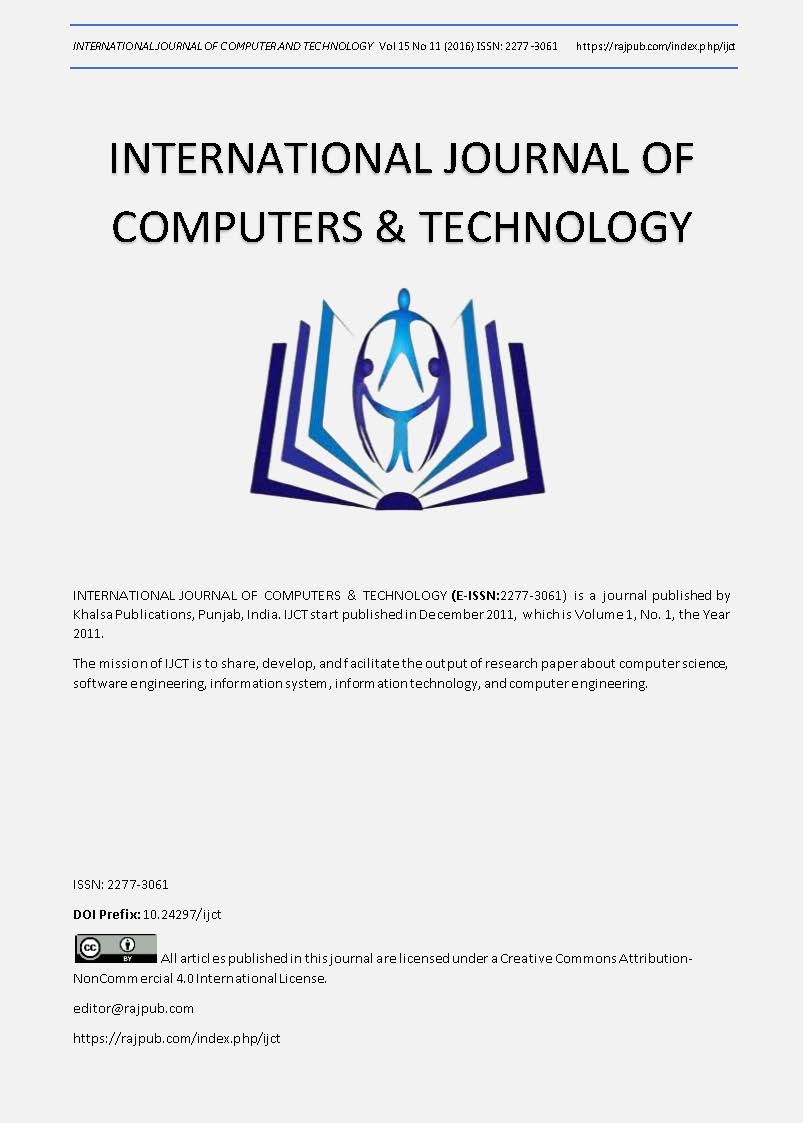An Interactive Web-Based Tool For Teaching Computer Programming
DOI:
https://doi.org/10.24297/ijct.v15i11.4368Keywords:
Interactive learning tool, Management learning environment, Student motivation, Learning styles, Learning outcomesAbstract
Lab time dedicated to programming practice in most schools is typically not sufficient for students to succeed as professional programmers. In this paper, we introduce an interactive tool for teaching computer programming. The tool can be used outside the classroom as it is web-based, can be easily integrated with any management learning environment such as BlackBoard, and provides better opportunities for distance learning and online education programs. The tool engages students as active learners and considers student learning styles to effectively improve the learning process. Our experimental study shows that using our tool significantly increased the achievement percentage of our class learning outcomes.Downloads
Download data is not yet available.
References
1) Abdel-Raouf, A., 2014. An Integrated E-learning Environment for Teaching Computer Programming, in the Proceedings of the 2nd Conference on E-Learning in the Arab World (EELU), pp. 239-251, Cairo, Egypt.
2) Brusilovsky, P., Eklund, J. and Schwarz, E., 1998. Web-based education for all: a tool for development adaptive courseware. Computer networks and ISDN systems, 30(1), pp.291-300.
3) Brusilovsky, P. and Peylo, C., 2003. Adaptive and intelligent web-based educational systems. International Journal of Artificial Intelligence in Education. IJAIED 13, 159-172.
4) Cheng, I.F., 1997. Internet Interactive Authoring, Tech and learning- a breakthrough for education, Proceedings of the COMPSAC’97–21st International Computer Software and Applications Conference.
5) Chumley-Jones, H.S., Dobbie, A. and Alford, C.L., 2002. Webâ€based learning: Sound educational method or hype? A review of the evaluation literature. Academic medicine, 77(10), pp.S86-S93.
6) Dagger, D., O'Connor, A., Lawless, S., Walsh, E., & Wade, V. P., 2007. Service-oriented e-learning platforms: From monolithic systems to flexible services. Internet Computing, IEEE, 11(3), 28-35.
7) Fergany, T., Eggert, D., and Fischer, A., 2001. A Web-Based Learning Environment for the C-programming language, The IEEE Educational Software Workshop, Cairo.
8) Fergany, T., and Abdel-Raouf, A., 2011. An Active Learning Environment for Teaching Object-Oriented Concepts, Design and Implementation, in the Proceedings of the ASEE Northern Section Conference, Hartford University, Hartford, CT.
9) Gaddis, T., 2015. Starting out with Java from control structures through objects, 6th Edition, Addison-Wesley Publishers Ltd, New York.
10) Khan, B.H. ed., 1997. Web-based instruction. Educational Technology.
11) Law, K. M., Lee, V., & Yu, Y. T. , 2010. Learning motivation in e-learning facilitated computer programming courses. Computers & Education, 55(1), 218-228.
12) Lee, W.W. and Owens, D.L., 2004. Multimedia-based instructional design: computer-based training, web-based training, distance broadcast training, performance-based solutions. John Wiley & Sons.
13) Liaw, S. S., Huang, H. M., & Chen, G. D., 2007. Surveying instructor and learner attitudes toward e-learning. Computers & Education, 49(4), 1066-1080.
14) Ng, J., and Marriott, A., 1996. A survey of Users of a Web-bases computer graphics course, IEEE Computer Graphics and Applications, Vol. 16, N0 3.
15) Peters, J., 2004. Learning outcomes and information literacy. SCONUL.
16) Rauhvargers, A., Deane, C., and W. Pauwel. 2009. Report from working groups appointed by the Bologna Follow-up Group to the Ministerial Conference, April28-29, in Leuven/Louvain-la-Neuve.
17) Simulators for Teaching Computer Science, 2007. http://vip.cs.utsa.edu/simulators/ (accessed 04.08.2016).
18) Sommerville, I., 2010. Software Engineering, 9th Edition, Addison-Wesley Publishers Ltd, New York.
19) Wolf, C., 2003. IWeaver: towards' learning style'-based e-learning in computer science education, In Proceedings of the fifth Australasian conference on Computing education-Volume 20 (pp. 273-279).
2) Brusilovsky, P., Eklund, J. and Schwarz, E., 1998. Web-based education for all: a tool for development adaptive courseware. Computer networks and ISDN systems, 30(1), pp.291-300.
3) Brusilovsky, P. and Peylo, C., 2003. Adaptive and intelligent web-based educational systems. International Journal of Artificial Intelligence in Education. IJAIED 13, 159-172.
4) Cheng, I.F., 1997. Internet Interactive Authoring, Tech and learning- a breakthrough for education, Proceedings of the COMPSAC’97–21st International Computer Software and Applications Conference.
5) Chumley-Jones, H.S., Dobbie, A. and Alford, C.L., 2002. Webâ€based learning: Sound educational method or hype? A review of the evaluation literature. Academic medicine, 77(10), pp.S86-S93.
6) Dagger, D., O'Connor, A., Lawless, S., Walsh, E., & Wade, V. P., 2007. Service-oriented e-learning platforms: From monolithic systems to flexible services. Internet Computing, IEEE, 11(3), 28-35.
7) Fergany, T., Eggert, D., and Fischer, A., 2001. A Web-Based Learning Environment for the C-programming language, The IEEE Educational Software Workshop, Cairo.
8) Fergany, T., and Abdel-Raouf, A., 2011. An Active Learning Environment for Teaching Object-Oriented Concepts, Design and Implementation, in the Proceedings of the ASEE Northern Section Conference, Hartford University, Hartford, CT.
9) Gaddis, T., 2015. Starting out with Java from control structures through objects, 6th Edition, Addison-Wesley Publishers Ltd, New York.
10) Khan, B.H. ed., 1997. Web-based instruction. Educational Technology.
11) Law, K. M., Lee, V., & Yu, Y. T. , 2010. Learning motivation in e-learning facilitated computer programming courses. Computers & Education, 55(1), 218-228.
12) Lee, W.W. and Owens, D.L., 2004. Multimedia-based instructional design: computer-based training, web-based training, distance broadcast training, performance-based solutions. John Wiley & Sons.
13) Liaw, S. S., Huang, H. M., & Chen, G. D., 2007. Surveying instructor and learner attitudes toward e-learning. Computers & Education, 49(4), 1066-1080.
14) Ng, J., and Marriott, A., 1996. A survey of Users of a Web-bases computer graphics course, IEEE Computer Graphics and Applications, Vol. 16, N0 3.
15) Peters, J., 2004. Learning outcomes and information literacy. SCONUL.
16) Rauhvargers, A., Deane, C., and W. Pauwel. 2009. Report from working groups appointed by the Bologna Follow-up Group to the Ministerial Conference, April28-29, in Leuven/Louvain-la-Neuve.
17) Simulators for Teaching Computer Science, 2007. http://vip.cs.utsa.edu/simulators/ (accessed 04.08.2016).
18) Sommerville, I., 2010. Software Engineering, 9th Edition, Addison-Wesley Publishers Ltd, New York.
19) Wolf, C., 2003. IWeaver: towards' learning style'-based e-learning in computer science education, In Proceedings of the fifth Australasian conference on Computing education-Volume 20 (pp. 273-279).
Downloads
Published
2016-08-25
How to Cite
Abdel-Raouf, A. (2016). An Interactive Web-Based Tool For Teaching Computer Programming. INTERNATIONAL JOURNAL OF COMPUTERS &Amp; TECHNOLOGY, 15(11), 7235–7240. https://doi.org/10.24297/ijct.v15i11.4368
Issue
Section
Research Articles









